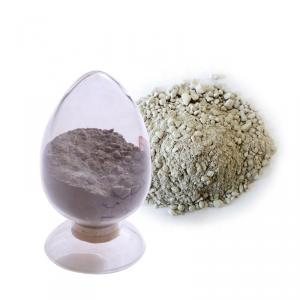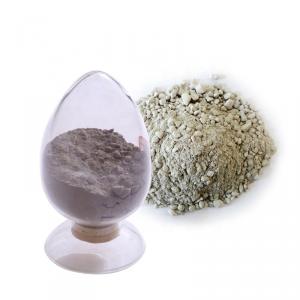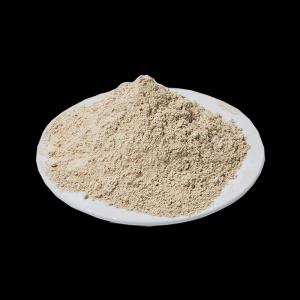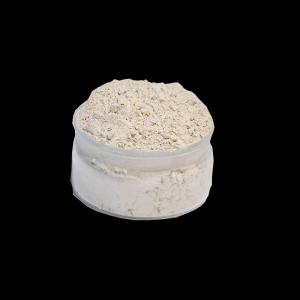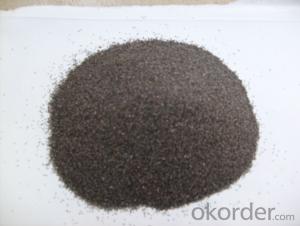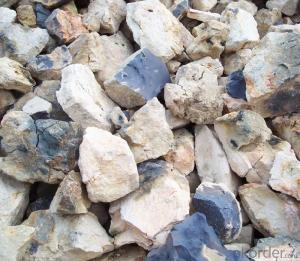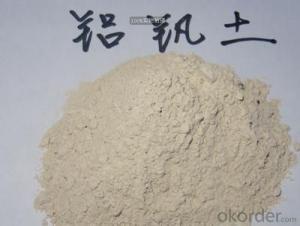High Alumina Cement Powder for Refractory
- Loading Port:
- China main port
- Payment Terms:
- TT or LC
- Min Order Qty:
- 25 m.t.
- Supply Capability:
- 500 m.t./month

- OKorder Service Pledge
- Quality Product
- Order Online Tracking
- Timely Delivery

- OKorder Financial Service
- Credit Rating
- Credit Services
- Credit Purchasing
Product Description
Aluminate cement is a hydraulic cementitious material prepared by calcining aluminum clinker and limestone as raw materials, with calcium aluminate as main component and alumina content of about 50%.
Aluminate cements are often yellow or brown color, and even gray color The main minerals of aluminate cement are calcium monocalcium phosphate (CaO·Al2O3, abbreviated CA) and other aluminates, and a small amount of dicalcium silicate (2CaO·SiO2). The colors are mostly gray and white.
Quick Details
Place of Origin:China
Application: Refractory,
Shape: Powder
Material: AL2O3,SIO2,FE2O3
Chemical Composition: AL2O3,SIO2,FE2O3
Product name: refractory cement
Payments terms: 1. 100% L/C at sight 2. 30% T/T prepayment, balance against BL copy
Delivery Time: Within 30 days after receiving L/C or 30% T/T prepayment
Advantage: Timely Shipment, High quality, Good performance
Packing: 25kg/bag, 1mt/bag or as customers' requirements
Size: powder
Sample supply: free sample
Color: gray/yellow
MOQ: 25Mt
Supply Ability
Supply Ability:500 Metric Ton/Metric Tons per Month
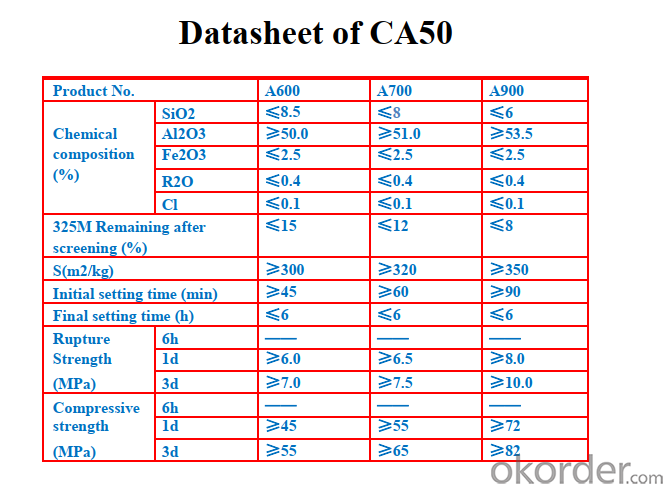
Packaging & Delivery
Packaging Details1MT/bag or as customers' requirements.
Loading:
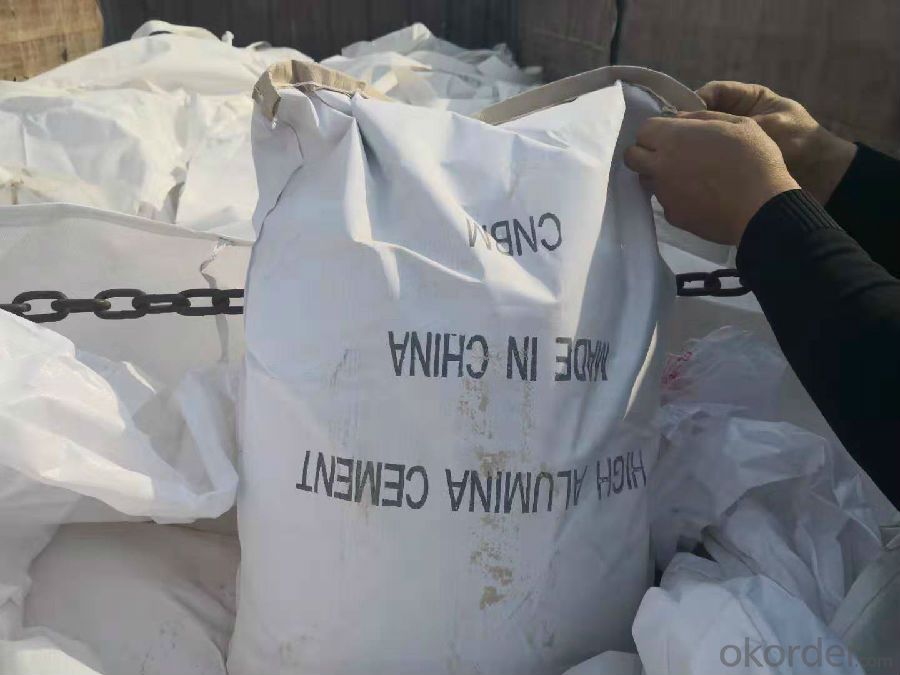

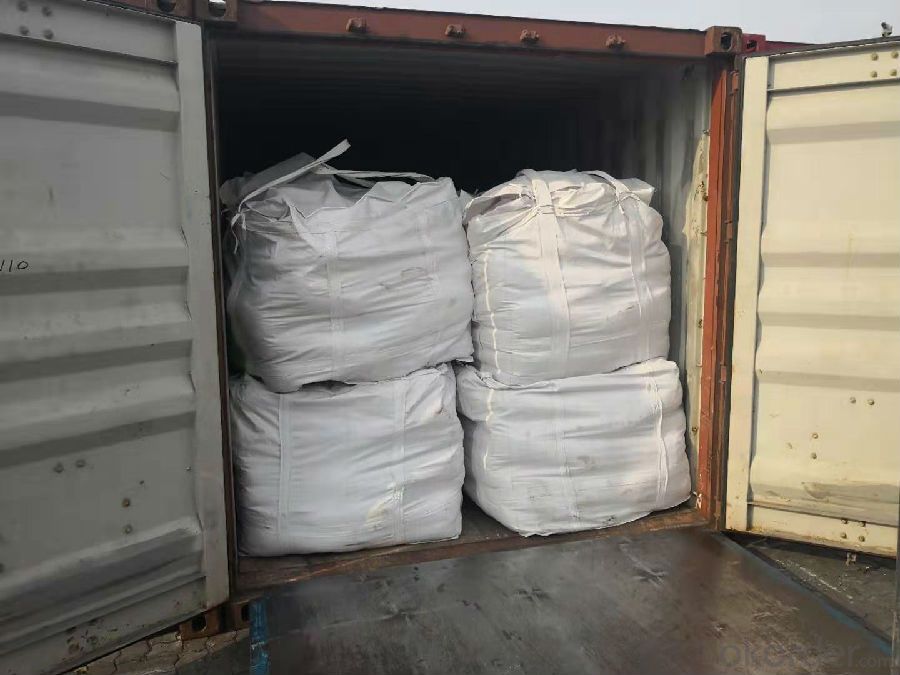
- Q:What materials is silicious thermal insulation board made of?
- Siliceous insulating panels use quartz sand as the main material and are composited with fiber. Of course the amount of insulation board materials used by different companies is different. In terms of Hua Heng, siliceous insulating boards can be divided into insulating panels for casting slabs and insulation board for intermediate tank according to the usage. The latter one can be divided into liner plate (wallboard, side panels, baseboard) and impingement plate based on parts it is used on. Siliceous insulating panels use quartz sand as the main material and are composited with fiber. Method for manufacturing a silicon insulating panel is divided into semi-dry method and wet method. It is used for casting ingot insulation cap of the killed steel and continuous casting tundish.
- Q:What advantage and disadvantages it has compared to common fire insulation materials
- Main advantage of A-level fire proof heat retaining plate is A-level non-conbustibility. Now residential areas strictly require the external walls to be high-level fire proof, to be specific, high fire resistance, non combustible. Standards for evaluation varies according to different types, which includes anti-corrosion, acid and alkali resistance, waterproof, anti termites and so on. Disadvantage is the insulation effect is quite ordinary. It will absorb water, get deformed, need some water prevention measures after constrcuting thermal insulating layer for it. Its thermal conductivity far below the benzene plate, and plastic extruded palte, half the thickness of the polyurethane insulation layer can reach heat perservation effectiveness of the benzene plate and extruded plate of the same thickness.
- Q:Where is the development of refractory industry?
- The rapid development of continuous casting technology of its related @ China @4 honing refractories develop and increase in variety and quality, continuous development of refractories for the continuous casting billet continuous casting production and quality have a significant impact. Especially, the completion and operation of Baosteel have greatly promoted the technological progress of refractory materials in China, and the refractory materials for continuous casting have made great progress both in variety and in quality.
- Q:What's the heat conductivity coefficient, specific heat capacity and density of the refractory material of magnesite-chrome brick and magnesia-alumina brick respectively?
- It is suggested that you find some samples of well-known manufacturers, such as Ogilvy and Mather Group, and that will be more correct.
- Q:What kind of refractory materials are used in metallurgy industry?
- Argon-blowing rod, siliceous dry vibrating materials, desulfurizer, slag-stopping ball, stainless steel thermal insulating agent with high efficiency, dry vibration material, sizing nozzle heat-insulating panel, chrome refractory , refractory carstables for ladles, magnesia carbon refractory, package castable, siliceous drainage agent, tundish block, iron trough, deoxidizer, compound deoxidizer,silicon manganese alloy , stemming, floating plug,slagging agent. The main materials are as follows: recarburizer, covering agent, intermediate frequency furnace burden, mould fluxes, insulation thin slag agent, skimmer repair material, joint sealant.
- Q:What's the heat conductivity coefficient of fire-resistant material?
- There are many types of fire-resistant materials woth different thermal conductivity. The question should be more specific.
- Q:Is there a worker in (Jigang refractory plant)?
- Exactly, you are not in the strict sense of the refractory plant contract worker, your contract is not signed and refractory plant, your wage system, and the worker in the factory is not the same, you can not follow the normal off-duty execution system
- Q:Can anyone say something about the curtain wall fire-proof material key sealing point?
- Hello. 1. Gaps between the curtain walls and floors of all tier and partitions outer edge should be sealed with non-combustible material or flame retardant materials. Filling material can be rock wool or mineral wool, whose thickness should be not less than 100mm and should meet the designed fire endurance requirements, forming fire and smoke prevention areas between floors and rooms. Fireproof layer should use galvanized steel bearing with thickness of not less than 1. 5mm, and should not use aluminum plate. Gaps between bearing plate and main structure, curtain wall structure and the bearing plate should be sealed by fireproof sealant; fireproof sealant should has fireproof inspection reports granted by statutory testing organizations. 2. When building designs requiring transparent effect of fire compartment and separation, monolithic fire-resistant glass or hollow and laminated fire-resistant glass nade by monolithic fire-resistant glass can be adopted. 3. Windowsills-free curtain walls, incombustible entities skirt wall or fireproof glass wall whose fire endurance is not less tan 1.0 hour and height is not less than 0.8m should be set on the outer edge of each floor. The thickness of reinforced concrete floor or height of the side beams should be counted when calculating the height of the skirt wall. 4. Fire protection layer should not contact directly with the glass curtain wall, and the side towards the glass of fireproof materials should be covered with the decorative material. 5. Glass units of the same curtain wall should not cross two fire?compartments.
- Q:Does anyone know the characteristics of refractory for glass kiln?
- Quartzitic sandstone. Also known as quartzitic sandstone or white gravel. Which is a kind of natural refractory and quartz sandstone bonded by the kaolinite. Who appearance is better to be steel-grey, dense and hard, free of impurities and stripes. Its main crystalline phase is mainly quartz and kaolinite. Which has obvious stratified structure and anisotropism. The refractoriness fluctuation is between 1650~1730 ℃. The expansibility of quartzitic sandstone is different from that of silica?brick, who has maximum coefficient of thermal expansion under temperatures of 700 ~ 800 ℃, and it is most likely to burst at this time. The load softening temperature and the compression strength of calcined quartzitic sandstone have been improved significantly, with small residual expansion, stable volume, better thermal shock resistance, so it is generally to use calcinated quartzitic sandstone as refractories. which has been widely used as sidewall blocks on the small and medium sized furnaces.
- Q:who knows the uses of refratories?
- Of course, the role of the refractory material is fireproof, generally used in large buildings. It can reduce casualties and economic losses caused by the fire. it also can be used on the chemical instruments. ! !
1. Manufacturer Overview |
|
|---|---|
| Location | |
| Year Established | |
| Annual Output Value | |
| Main Markets | |
| Company Certifications | |
2. Manufacturer Certificates |
|
|---|---|
| a) Certification Name | |
| Range | |
| Reference | |
| Validity Period | |
3. Manufacturer Capability |
|
|---|---|
| a)Trade Capacity | |
| Nearest Port | |
| Export Percentage | |
| No.of Employees in Trade Department | |
| Language Spoken: | |
| b)Factory Information | |
| Factory Size: | |
| No. of Production Lines | |
| Contract Manufacturing | |
| Product Price Range | |
Send your message to us
Similar products
New products
Hot products
Related keywords
You Might Also Like
